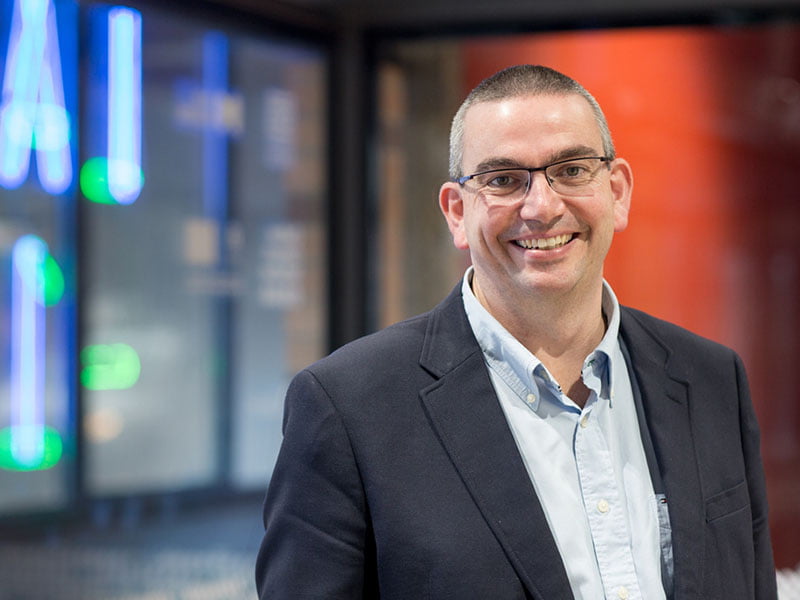Australia could be kicking off a ten-year ride for all of us to live longer if the first National Mission proposed in a new strategy paper gets a tick from the federal government.
The National Missions concept comes in the fifth and final imperative listed in the Innovation and Science Australia 2030 Strategy which was publicly released today.
The idea is to charge up the Australian ethos around scientific endeavours by “enhancing the national culture of innovation by launching ambitious National Missions”, according to the report.

National Missions are large undertakings, designed to capture the imagination of all Australians, with clear objectives within a ten-year span.
The first National Mission proposed to government by the ISA is to employ advanced genomics and precision medicine to help Australia become the healthiest country on Earth.
The paper recognises that nailing down some metrics to define us as the healthiest on the planet is tricky but puts forward life expectancy as one clear target.
At the moment we are not doing too badly with life expectancy. Australians come sixth in the world on an OECD list with a life expectancy of 82.5 years, and we do it reasonably efficiently, with health expenditure per person of US$4493, the 14th highest in the world.
Japan leads the world with a life expectancy of 83.7 years.
The Genomics and Precision Medicine National Mission would look to pushing our life expectancy to the top as well as improving quality of life.
The cost of the project, according to Charlie Day, the chief executive of the Office of Innovation and Science Australia, is a $200 million contribution over ten years from the Federal government, bolstered by another $200 million from the states, industry, and the philanthropy and education sectors.
The program would sharpen up the diagnoses through “a greater range of targeted, cost-effective population genome screening programs to identify rare and chronic diseases, especially cancer, earlier than ever before,” says the report.
Gene therapy and gene editing would be assisted by artificial intelligence and machine learning techniques and the population would score better awareness of susceptibility to various diseases, have access to more effective, safer and more finely-honed treatment regimes and be better able to prevent the ward off disease by lifestyle changes.
The report makes a number of references to the US mission in the sixties to put a human being on the Moon.
The eventual Apollo 11 mission that completed the task landed on the Moon in July 1969, just inside the end of decade deadline set by President John F Kennedy with his famous “we choose to go the Moon” speech before Congress in May 1961.
While the moon landing was a mammoth and worthy undertaking, the goal was crystal clear and the checkpoints utterly accountable and highly visible to the public. The rockets went up and the crews returned safely, or they didn’t.
Dr Day agrees that measuring the qualitative benefits of the genome project may be a little trickier.
“With the original moon-shot, the definition between success and failure was pretty binary and that made it a little easier to know if you were successful.
“However we see we can put some metrics in place around this project that are pretty easily trackable and tell you whether or not you are on course to where you want to get to.”
“The thing we really want to achieve from the missions that we learned from the Apollo program is challenging our brightest scientists and engineers to tackle some problems that were thought to be too difficult and inspiring our young people into science and engineering type professions. We think we will need them in the health care system going forward.
“We think the goal is sufficiently exciting, clear and I think people will buy into it.”
Dr Day says the idea of setting up National Missions came from the need for Australia to reach higher in its scientific ambitions.
“As a board we thought about the various opportunities we wanted to see included in the plan. We had a strong view that Australia needed to aim high and be bold in its ambitions around science
“That led to the concept of National Missions and the mission led directive is something we are seeing pop up in other countries around the world.”
While the genome and precision medicine project is the main idea proposed as the first National Mission, there are two other missions listed in the report.
While Dr Day sees the genome project as a strong proposal with a good chance of getting the go ahead from the Federal government and the states, the other two are more prospective.
The first is Restore the Reef: Preserving the Great Barrier Reef beyond 2030.
This would build create the world’s largest reef re-engineering program to increase its resilience to climate change.
The second, Hydrogen City, would convert the gas supply of an Australian city from natural gas to hydrogen and demonstrate the possibility of decarbonising the direct combustion sector, which is responsible for 18 per cent of Australia’s greenhouse gas emissions.
Dr Day expects the extra proposed National Missions to generate plenty of debate.
“We think part of the benefit of the National Missions is to engage the Australian public in a debate and a national conversation around this.
“So we put up those two missions as candidates. I’m sure if we went around and asked people there would be no shortage of other candidates.
“We think that is something that should be subject of a genuine, national conversation,” he said.
Do you know more? Contact James Riley via Email.

